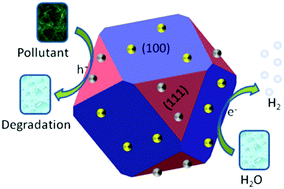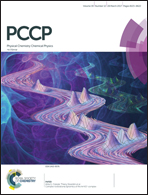Dual-functional photocatalysis for hydrogen evolution from industrial wastewaters†
Abstract
Realization of hydrogen economy requires an environmental and economic method for hydrogen (H2) evolution. Dual-functional photocatalysis, that is, producing H2 from industrial wastewaters, may be the most ideal. However, it seems almost impossible to achieve dual-functional photocatalysis because of the difficulty in the simultaneous existence of photocatalytic pollutant degradation (PDR) and H2 evolution reactions (HER) in one system. All previous designs show that either HER or PDR is inhibited due to the insufficient management of the photo-generated electrons (e−) and holes (h+). To overcome this issue, we consider that both PDR and HER could be improved simultaneously by employing a suitable photocatalyst whose main active species in PDR are h+. In this case, e− and h+ can play their own roles in accomplishing HER and PDR, respectively, via the charge spatial separation in the selected photocatalyst. Herein, Cu2O polyhedrons are constructed as a proof-of-concept example. A favorable dual-functional photocatalytic performance is achieved by the Cu2O cubooctahedrons. Furthermore, an appropriate pollutant concentration is significant for the optimization of both HER and PDR performances due to the competition between H atom adsorption and pollutant molecule adsorption on the surfaces of the photocatalyst. This advance provides the H2 evolution technology with a more environmental and economic method.



 Please wait while we load your content...
Please wait while we load your content...